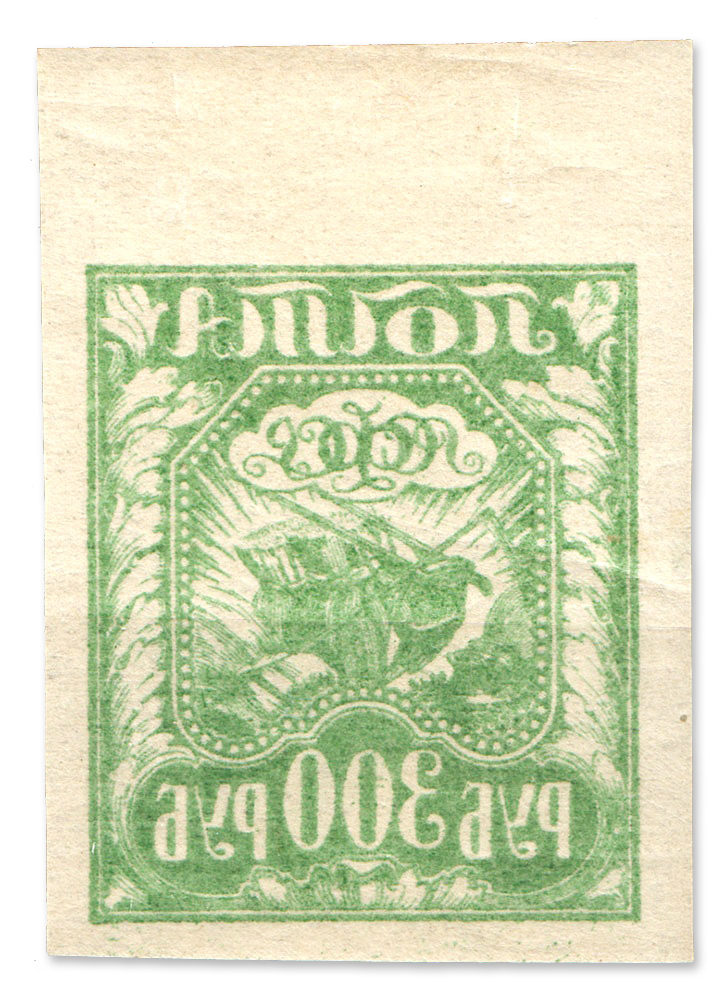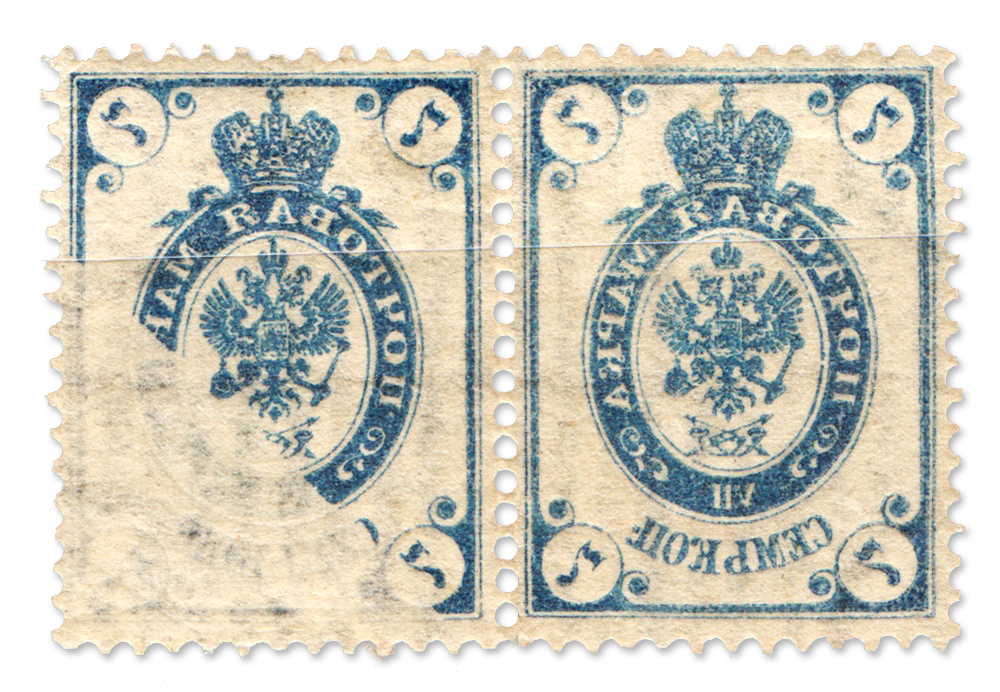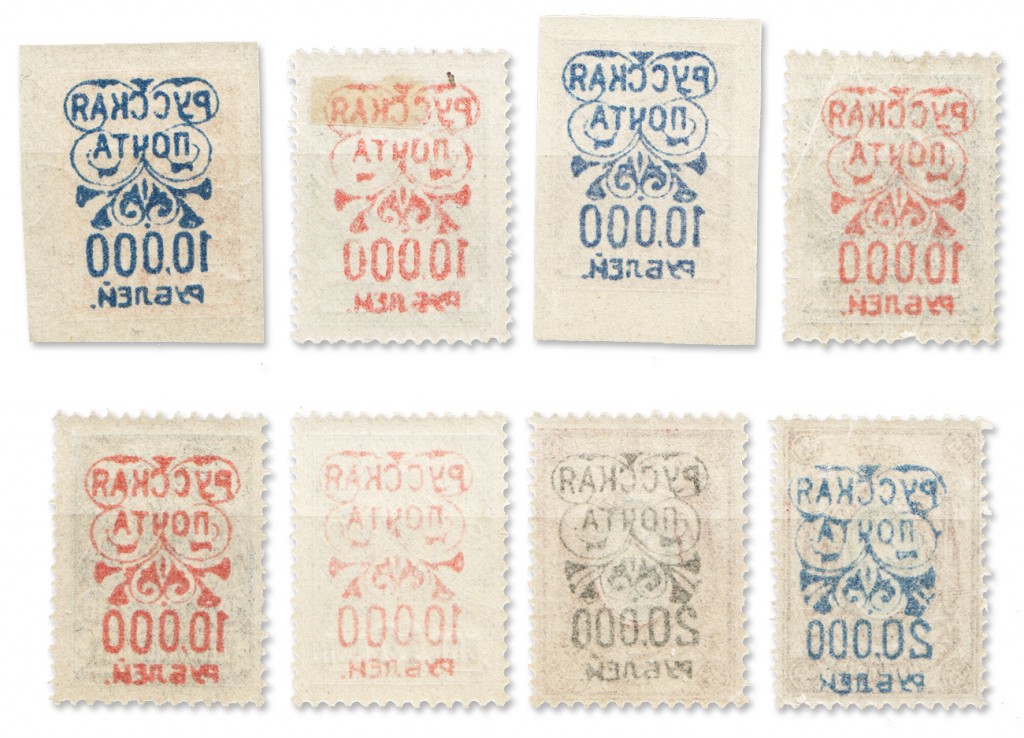Offsets: Causes and Types
Views : 3975

1917 Russia 3 Kop stamp – full offset.
Causes
It should be noted that initially, many people thought that only a particular type of printing error could be considered an offset; nevertheless, it was not entirely so. An offset can appear in several settings. First, an offset can occur when an employee or equipment misses the sheet during the process of stamp printing. The image from the printing form is transferred not to the sheet but to the pressure roller, and when the next sheet is fed, the image is transferred to the face side, and the paint from the roller gets onto the gum side of the sheet. This is a classical case when the mirror impression occurs.
Second, an offset can appear when sheets that are still wet are folded, and the paint from one sheet is printed on the back side of the other sheet lying on top of it. Moreover, if the stamps are kept in a room with high humidity, the gum becomes wet, and an offset appears on it (however, in this case, the image is usually blurred).
Third, an offset frequently occurs when using an oily ink for printing on porous paper, so that the ink soaks the paper through and appears on the back side. Thus, a mirror impression occurs when the image is printed on one side of the sheet or when the ink soaks through the sheet. Given that the technology has become more advanced with time, offsets now appear quite rarely.
Types

1908-17 Russia 15 Kop stamp – partial offset.
There are different offset types. For instance, mirror impression can be normal (straight) or inverted. In the second case, the image on the back side is upside-down with respect to the image on the front side. In addition, the mirror impression can be full or partial. In a full offset, the entire picture is reproduced on the back side of the stamp, and in a partial offset, only some elements of the pattern are printed. In cases when only one color of ink is transferred to the back side, it is also considered a partial offset.

1921 Russia Wrangel Issue Type 1 Civil War stamp – offset overprint.
Furthermore, an offset can be shifted, that is, shifted horizontally (right, left) or vertically (up, down) in relation to the image on the front side of the stamp. Quite often there are stamps on which the offset is shifted both horizontally and vertically. Also, collectors can find stamps with offset overprints. It is crucial to note that offsets, as well as other varieties associated with manufacturing defects, are considered valuable stamps, and they cost more than ordinary issues. Some offsets can be sold for impressive amounts of money at online stamp auctions.